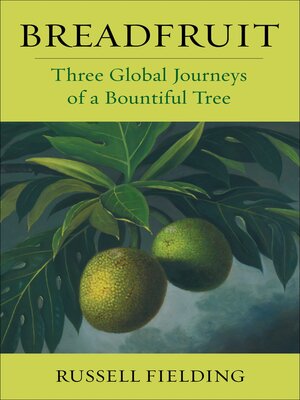Breadfruit
ebook ∣ Three Global Journeys of a Bountiful Tree · Arts and Traditions of the Table: Perspectives on Culinary History
By Russell Fielding

Sign up to save your library
With an OverDrive account, you can save your favorite libraries for at-a-glance information about availability. Find out more about OverDrive accounts.
Find this title in Libby, the library reading app by OverDrive.



Search for a digital library with this title
Title found at these libraries:
| Library Name | Distance |
|---|---|
| Loading... |
Breadfruit trees are staples of the tropics, bearing cantaloupe-sized green-skinned fruits whose taste and texture resemble potatoes. More than three thousand years ago, breadfruit fueled the Pacific voyages of discovery that settled islands throughout Oceania. In the late eighteenth century, the British expedition that ended with the mutiny on the Bounty aimed, but failed, to introduce breadfruit to the West Indies as food for enslaved African laborers on sugar plantations. A later voyage resulted in the fruit's widespread distribution and complicated role within modern Caribbean food cultures. In recent years, breadfruit has been touted as a tool for sustainable development and as a "superfood" with both health benefits and culinary versatility.
Russell Fielding tells these stories and many others, exploring breadfruit's fascinating global history and varied present-day uses. Bringing together extensive research and vivid travelogues, including learning directly from local agriculturists, chefs, scientists, and holders of traditional knowledge, he provides an immersive narrative of breadfruit's contributions. Fielding argues that breadfruit's history comprises two journeys: first, from its origins in Southeast Asia across the Pacific; and second, its transplantation to the Caribbean. Today, a third journey is taking place, one that is spreading breadfruit throughout the world.
Engagingly written and compellingly argued, this book draws timely lessons from breadfruit's past to forecast its future potential.







